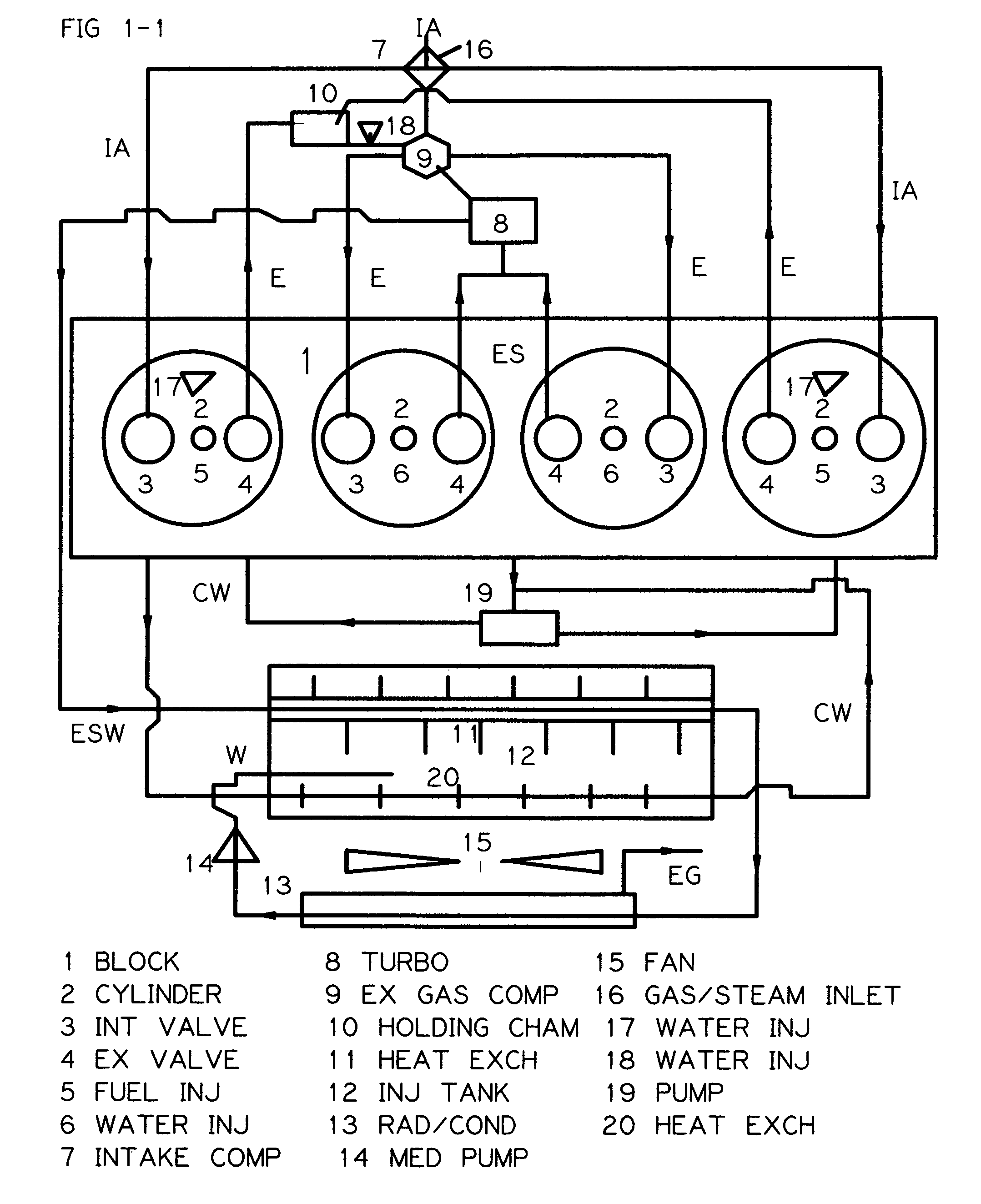Turbocharged internal combustion/steam hybrid engine
a hybrid engine and internal combustion technology, applied in the direction of machines/engines, mechanical equipment, lighting and heating apparatus, etc., can solve the problems of unsatisfactory gas production status and large quantity of unfriendly gases, and achieve the effect of reducing friction, reducing pumping and friction losses, and increasing total efficiency
- Summary
- Abstract
- Description
- Claims
- Application Information
AI Technical Summary
Benefits of technology
Problems solved by technology
Method used
Image
Examples
Embodiment Construction
[0015]FIG. 1-1 In the conventional compression ignition four cylinder in line engine block 1 shown, two cylinders would be combustion cylinders and two would be heat recovery steam cylinders. The combustion cylinders 2-5, would be 360 degrees out of phase with each other, and the heat recovery cylinders 2-6, 120 degrees out of phase with each other and 120 degrees out of phase with their adjoining combustion cylinder. This would produce six power strokes for every two revolutions of the engine, and an almost vibration free quiet smooth running engine.
[0016]The camshaft of this engine has been modified so that both cylinders 2-5, operate as four stroke cylinders while the inner two 2-6, as two stroke cylinders with double camshaft lobes for each valve, intake and exhaust. Another modification to the camshaft makes the two center cylinder intake valves 3, to have a low lift and duration of lift.[0017]a) Combustion cylinders 2-5, which operate on an Otto cycle have four strokes, intake...
PUM
 Login to View More
Login to View More Abstract
Description
Claims
Application Information
 Login to View More
Login to View More - R&D
- Intellectual Property
- Life Sciences
- Materials
- Tech Scout
- Unparalleled Data Quality
- Higher Quality Content
- 60% Fewer Hallucinations
Browse by: Latest US Patents, China's latest patents, Technical Efficacy Thesaurus, Application Domain, Technology Topic, Popular Technical Reports.
© 2025 PatSnap. All rights reserved.Legal|Privacy policy|Modern Slavery Act Transparency Statement|Sitemap|About US| Contact US: help@patsnap.com



